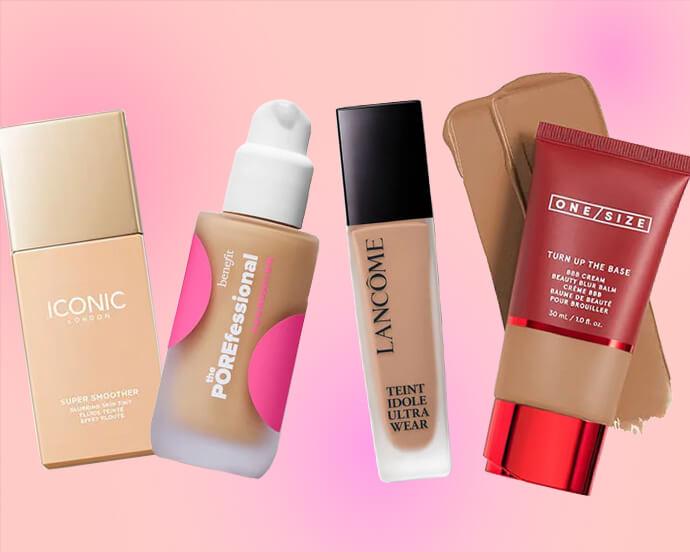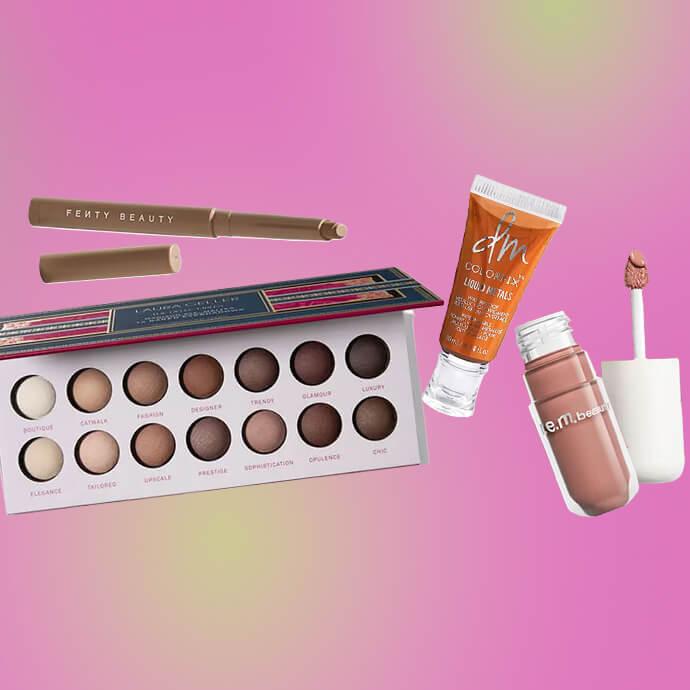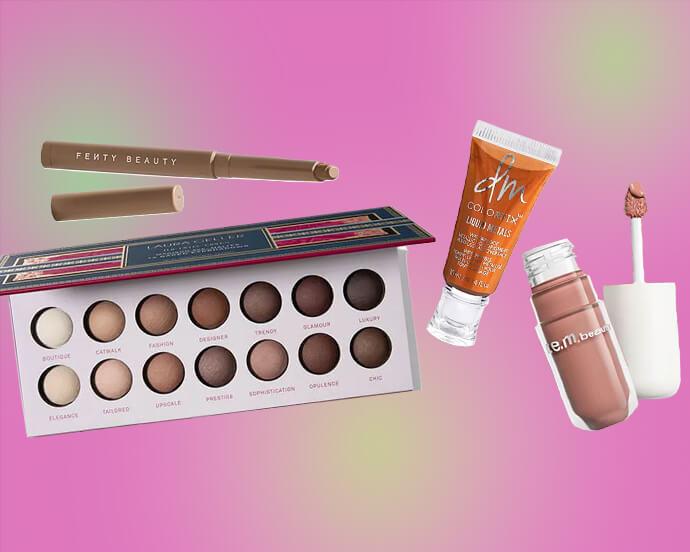The Ultimate Guide to Finding Your Skin’s Undertone—Plus Expert Tips on Picking the Right Products



Runa Bhattacharya


Photo by pixdeluxe/Getty Images
One of the best things to happen to makeup over the past decade? The rise of more inclusive foundation ranges, which means less mixing and Macgyver-ing shades to fit your skin type and tone, and fewer foundation frustrations overall. But when it comes to finding your go-to foundation within these ever-expanding offerings, it’s not as simple as choosing what looks best in the bottle. In fact, it’s actually your skin’s undertone that really helps you hone in on your perfect match.
Determining your skin's undertone is the basis of your makeup look. It ensures that everything from your foundation to your lipstick looks flattering—but incidentally, it's the most difficult trait to determine. Lucky for you, we've created a comprehensive guide to skin tones to help you get it right every time. Continue reading for pro tips on how to determine your undertone and why it’s a game changer for buying and applying makeup.


It's about glam time you treated yourself.
MEET THE EXPERT
Liz Lash is an LA–based makeup artist who has worked with celebrities like Busy Philipps and Kristen Wiig.
Amber Dreadon is an LA–based makeup artist who has worked with celebrities like Lorde, Katy Perry, and Billie Eilish.
So, What's the Deal With Undertones?
What are undertones? Think of them like half sizes in shoes, whereas skin tones are whole sizes. Whole sizes get you pretty close to a good fit, but half sizes (undertones, in this case) are much more precise. Makeup artist Amber Dreadon explains: "The goal with wearing base products like foundation and concealer is to even out the skin tone so that it looks as close to the best version of your real skin color as possible. Finding the right undertone is a big part of finding the right foundation. Often when I am matching a foundation to skin, there will be more than one skin tone option, but it's matching their undertone that will really give me the best results."
What Are the Different Undertones?
Upon first glance, you can easily determine whether your skin color is very fair, light, medium, or deep. But if you're having trouble finding your undertones, here are a few main characteristics of each to help.
There are three main undertones: cool, warm, and neutral. The fourth undertone is olive, which is less common (but just as beautiful!).
Cool: If you have a cool undertone, you most likely have shades of pink, red, or blue under your skin's surface.
Warm: If you have a warm undertone, your skin probably gives off a gold, yellow, or peach hue.
Neutral: If you have a neutral undertone, you probably have a mixture of tones or no distinct undertone at all.
Olive: If you have an olive undertone, you probably have yellow, green, or golden tint to your skin.
5 Pro Tricks for Finding Your Undertone
We get it; all this talk of warm and cool colors can feel dizzying. If you're feeling lost, try these five easy tricks to find your true shade.
1. Try the Vein Trick
Flip over your arm and take a look at the inside of your wrist. If your veins appear to have a blue or deep purple tint, you likely have cool skin undertones. If they look more greenish, you likely have warm or olive undertones. If you can't tell one way or the other, you may have neutral undertones.
2. Take Note of Your Skin in the Sun
If you notice you get sunburn easily after sun exposure (ahem, don't forget the sunscreen either way!), you probably have a cool undertone. If you tan easily, you're a warm undertone. If you burn and then tan, you're likely a neutral undertone. If you don't typically bronze or burn, you may fall in the olive category.
3. Compare Your Skin to Something Stark White
Hold up a piece of white paper or a bright white T-shirt next to your face in natural light. If your skin looks slightly yellow against the white, you have a warm undertone. If your skin looks red and rosy up against the tee or paper, you most likely have cool skin undertones. If you can wear both colors without feeling like you look washed out, you may have a neutral or olive undertone.
4. Try on Silver and Gold Accessories
This trick isn't so much an exact science as it is about determining what makes you feel best. If you tend to love how gold jewelry looks on your skin, you may have warm undertones. Meanwhile, those who favor silver jewelry often have cool undertones. If you love wearing both, it's possible that you have neutral tones.
5. Consider Your Other Features
When all else fails, look to your eye and hair color as a guide to what your undertone may be. While there are certainly exceptions, as a generalization, deeper skin tones and deeper eye colors usually tend to have warmer and more olive undertones, while very fair skin and lighter eyes tend to have neutral or cool undertones.
How to Find the Right Products for Your Undertone
So you know your undertone. Now what? Well, if you’re on the hunt for a new blush or lippie, a few simple tips can help you pick a shade you’ll love at first swipe. (Don’t worry, we’ll get into foundations later!)
Cool: In general, you’re looking for cool-toned blushes and lip colors that complement your cool undertones. Think soft pink, mauve, violet, or a blue-toned red.
Warm: Warm-toned pigments will complement the warmth in your skin the most (makes sense, right?). For blushes, that could be peach or coral; for lippies, warm pink or orangey red.
Neutral: Pretty much any shade of blush or lipstick will flatter you (lucky you!), since you’re right in between cool-toned and warm-toned. We say play with a bunch, find your faves, then pick the one that fits your vibe (or your outfit) that day.
Olive: Earthy shades will look gorgeous with your undertone, so go for terracotta or warm rose blushes, or lip products with caramel, copper, or brick-red tones.
How to Find a Foundation Shade That Matches Your Undertone
If you’re still not sure what your undertone is, when testing out foundation shades, makeup artist Liz Lash suggests trying on two shades that fall within your skin tone range–one with a cool undertone and one with a warm undertone. "The shade that disappears into your skin is a match." Both Lash and Dreadon agree that you should test the foundation color on your lower neck and chest area in natural daylight. "I start by adding the foundation to the jawline and blending it into the neck. If it doesn't match, I'll make adjustments," says Lash. When looking at foundation formulas, look for shades that specifically mention the words "cool," "warm," and "neutral." For example, the SMASHBOX COSMETICS Studio Skin Foundation comes in 39 different shades that specify what skin tone and skin undertone each works best for.
If a foundation you're interested in doesn't explicitly say which color undertone it's best for, your next option is to use visual cues. Formulas that look pinkish in the bottle tend to indicate a cool undertone, while foundation shades with a subtle yellow or gold tint are a good sign that it has a warm undertone. If you can't tell if the shade is throwing pinkish or yellow hues, it's likely neutral. (If you have deeper skin, check out our list of best foundations for dark skin for extra tips!)
Confident you know your undertone? This is what to look for in foundation and base products:
Cool: Shades that are more pink than yellow.
Warm: Shades that lean more yellow than pink.
Neutral: Shades that aren’t too yellow or too pink.
Olive: Shades with olive or neutral-golden undertones.
How to Wear Color for Your Skin Tone Like a Pro
Now that you’ve learned how your undertones can influence your blush, lip, and foundation choices, let’s talk about how skin tone comes into the mix. Whether you have light, medium, or deep skin can impact how certain shades pop on your skin tone and hint at what undertones you’re likely to have. Here’s some skin-tone-specific info to keep in mind:
Light: Fair skin or pale skin tends to be neutral or have cooler undertones. Pinks will complement the pink, red, and bluish hints in cool skin, bringing your skin to life. Also, try taupe and beige tones to complement this undertone. Skin that's light but not pale looks best in softer cool-toned shades, like gray and deeper beiges.
Medium: Medium skin is most often warm or olive in tone and usually has the ability to go with both warmer and cooler colors. Take advantage of the versatility of your undertones and play with bold, bright colors (like that bright red lipstick you’ve been eyeing).
Deep: Deep skin can go both cool and warmer in color. If you have warm tones in your skin, look for browns, copper, bronze, purples, caramel, plum, or wine-colored eyeshadows and lipsticks. If you skew cooler, try pink-tinted shades or bright tangerine hues.
And there you have it! Finding beauty products that match both your skin tone and undertone will make all your products look that much better on your skin. Try it out and let us know if it worked for you @IPSY.
Liked this post? Share!
Related Stories


Makeup
Want an IRL Filter? These Are the Best Blurring Foundations
Published on Dec 12, 2025 • 5 min read


Makeup
How to Expertly Apply Eyeshadow on Mature Skin
Published on Dec 10, 2025 • 6 min read


Makeup
How to Use Bronzer and Contour to Sculpt Your Face Like a Pro
Published on Dec 5, 2025 • 9 min read


Makeup
Makeup for Older Women That Works With Your Skin, Not Against It
Published on Dec 1, 2025 • 12 min read


Makeup
2026’s Biggest Makeup Trends Are a Maximalist Dream
Published on Dec 1, 2025 • 8 min read


Makeup
2025’s Biggest Makeup Trends: Go Big or Go Home
Published on Dec 13, 2024 • 7 min read


Makeup
16 New Year’s Eve Makeup Ideas to Fashionably Ring in 2026
Published on Nov 25, 2025 • 10 min read


Makeup
Your 2026 Beauty Horoscope Is Here—and the Stars Are Serving Looks
Published on Nov 25, 2025 • 9 min read


Beauty Picked Just for You
Get 5 products worth up to $70
Plus exclusive access to epic deals up to 80% off
Starting at just $14/month. Cancel anytime.